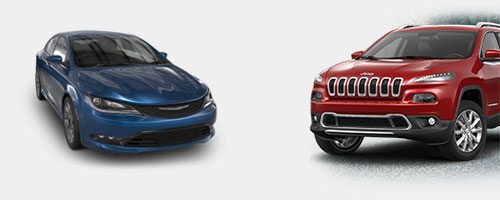2014 will go down as a truly transformational year for one of the traditional Big 3 American automakers; Chrysler.
Last October, Wall St welcomed a new automotive listing; Fiat Chrysler Automobiles (FCA, NYSE:FCAU). FCA is the result of the buyout of Chrysler group (Chrysler, Jeep, Dodge, Ram and Mopar) by Fiat group (Fiat, Alfa Romeo, Maserati and Ferrari), orchestrated by Italian-Canadian and then Fiat Group CEO, Sergio Marchionne.
For the Chrysler group, the Fiat takeover was just another page in an already turbulent recent history. In 1998, the ill-fated ‘merger of equals’ with Mercedes-Benz owner Daimler took place, only for Chrysler to be sold to investment firm Cerberus Capital Management in 2007. Just two years later, amidst the global financial crisis, Chrysler was declared bankrupt. In June 2009, when the company emerged from bankruptcy protection, Fiat Group received 20% of Chrysler Group in exchange for sharing its technology and platforms to build smaller and more fuel efficient vehicles.
New products, bold marketing and monthly sales growth
Soon after, Marchionne went to work on the delicate process of merging resources and different cultures of both groups. The best of platforms, engines, transmissions and interior components were now to be shared across all brands to produce better vehicles and better economies of scale. New Ram trucks were released, powered by leading Fiat group diesel engines, while new-generation Dodge Dart, Jeep Cherokee and Chrysler 200 leveraged Fiat group platforms and engines for improved dynamics and fuel-economy.

Brave new marketing and brand strategies were also implemented. Big budget Superbowl spots reassociated Chrysler brands to themes of classic Americana and the character of Detroit, and featured high profile personalities such as Clint Eastwood, Eminem, Oprah and Bob Dylan.
From bankruptcy to boom; the results of these strategies have been nothing short of remarkable. FCA has impressed auto scribes and commentators, captured industry awards and most importantly won back consumers; recording 58 months of straight sales growth in the US. From closing its first day of NYSE trade amongst investor scepticism at US$8.92, FCA’s share price has increased by 17% in 2015 alone, to over US$13.
Distinctive brand positioning and a focus on premium
 Despite its recent success, FCA is poised for more transformation in coming years. With the introduction of next-generation of models, each FCA brand will have a more defined market position, brand differentiation and target customer. Fiat will compete for subcompact sales with retro inspired designs and Chrysler will compete against Ford, Chevrolet and other mainstream brands for medium and large sedan sales. Jeep will further leverage its rugged design trademarks and off-road technology expertise to release new offerings in booming CUV and SUV segments, while Dodge will return to its roots in appealing to sports and muscle car enthusiasts.
Despite its recent success, FCA is poised for more transformation in coming years. With the introduction of next-generation of models, each FCA brand will have a more defined market position, brand differentiation and target customer. Fiat will compete for subcompact sales with retro inspired designs and Chrysler will compete against Ford, Chevrolet and other mainstream brands for medium and large sedan sales. Jeep will further leverage its rugged design trademarks and off-road technology expertise to release new offerings in booming CUV and SUV segments, while Dodge will return to its roots in appealing to sports and muscle car enthusiasts.
A key pillar of Marchionne’s future strategy to boost group profitability is through higher margin premium and luxury vehicles. This will result in the re-launch of the historic Alfa Romeo brand in the US, positioned as a true competitor to established German luxury carmakers Audi, BMW and Mercedes-Benz, while Maserati will expand as an ultra-luxury competitor to the likes of Jaguar and Porsche.
Are further mergers on the horizon?
By 2018, the company plans to invest $60 billion in new and refreshed products, adding more than 30 models, setting up a brand new Alfa Romeo dealership network in the US and expanding the number of Maserati dealers. Marchionne predicts this will help the new company boost global sales 60% to 7 million vehicles and realise a profit of $6.3 billion.
Currently FCA is the world’s Number 7 auto manufacturer by deliveries, and Marchionne has long championed that there’s room for just a half-dozen or fewer automaker groups. Although rumours persist of new partnerships and mergers with other automakers, the new model push gives FCA a legitimate argument to be one of those few players.
Image 1: Sergio Marchionne (3rd from left), marking the official listing of Fiat Chrysler Automobile (FCAU) shares to the NYSE. (credit: fcaspace.com)
Image 2: Sales success stories: Chrysler 200 and Jeep Cherokee. (credit: chrysler.com & jeep.com)
